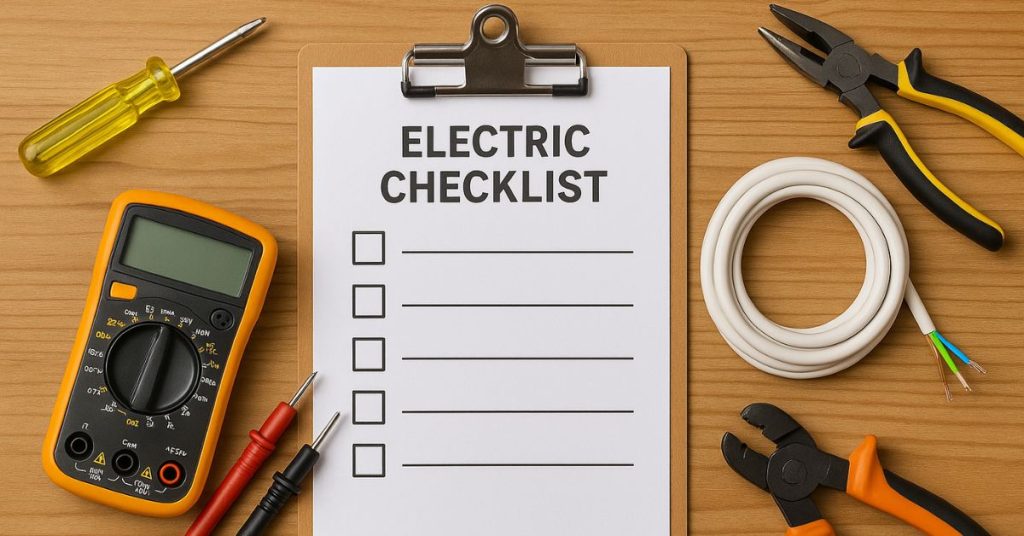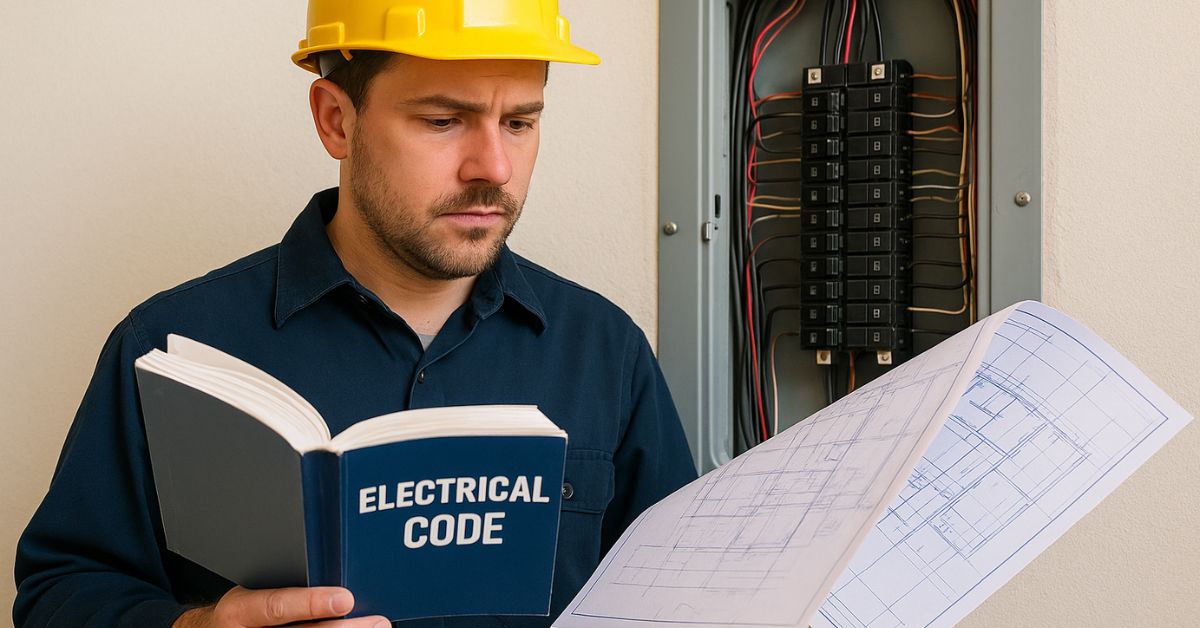To prepare for electrical code compliance inspections, ensure all electrical work meets current codes, use licensed electricians, review documentation, test systems, and correct violations beforehand to avoid delays or penalties.
Key Takeaways:
- Follow current electrical codes
- Hire licensed professionals
- Keep detailed documentation
- Test all systems in advance
- Fix known issues before inspection
Ensuring that your property meets electrical code compliance standards is crucial for safety, efficiency, and avoiding costly penalties. Whether you are a business owner, property manager, or homeowner, preparing for an electrical code compliance inspection requires careful planning, attention to detail, and adherence to the latest regulations. Below, we present a comprehensive guide to help you pass inspections with confidence and keep your electrical systems safe and efficient.
Understanding Electrical Code Compliance
The National Electrical Code (NEC), along with state and local amendments, establishes essential safety standards for all types of buildings. These codes ensure that electrical systems are safely installed and maintained, reducing the risk of fire, shock, and system failure.
Compliance is critical during construction, renovations, or inspections. Electrical inspectors evaluate systems based on NEC and local codes, so being prepared helps avoid costly violations. Understanding these requirements is key to ensuring safe, legal, and efficient electrical work.
Conduct a Thorough Pre-Inspection Assessment

Before scheduling an inspection, conduct a detailed internal assessment. This step helps identify potential issues early and provides time for corrections. Focus on:
- Wiring Systems: Verify that all wiring is properly installed, secured, and free from visible damage.
- Outlets and Switches: Ensure all outlets and switches are secure and free from damage.
- Lighting Fixtures: Confirm fixtures are secure and free from flickering or damage.
- Breaker Panels: Ensure circuit breakers are labeled accurately and that there is no evidence of overheating or corrosion.
- Load Capacity: Check that circuits are not overloaded and that demand aligns with panel capacity.
- Grounding and Bonding: Confirm that grounding systems are intact and properly connected.
- GFCI and AFCI Protection: Verify that protection devices are installed where required and functioning properly.
- Emergency Systems: Test backup generators, exit lighting, and emergency circuits for proper operation.
Electrical Documentation: Ensure schematics, permits, and records are accurate and up to date.
Verify Compliance with the National Electrical Code (NEC)
The NEC undergoes updates every three years, and many jurisdictions adopt these updates. Before inspection:
- Review the latest NEC version applicable in your area.
- Pay close attention to arc-fault circuit interrupters (AFCIs) and ground-fault circuit interrupters (GFCIs), as inspectors often focus on these.
- Ensure compliance with energy efficiency requirements where applicable.
- Update labeling and documentation according to NEC standards.
- Confirm that wiring methods, materials, and equipment are approved and installed according to NEC guidelines.
Organize Documentation and Records
Having detailed records ready for the inspector can make a significant difference. Prepare the following:
- Electrical Plans: Updated blueprints or schematics of your electrical system.
- Load Calculations: Documentation showing compliance with load requirements.
- Inspection History: Records of past inspections and any corrective actions taken.
- Permits and Certifications: Copies of permits and professional licenses of contractors involved.
Maintenance Logs: Records of routine inspections, repairs, and equipment servicing.
Ensure Accessibility for Inspectors
Inspectors need clear and safe access to all electrical components. Prepare by:
- Clearing access to breaker panels, wiring closets, and junction boxes.
- Removing obstructions around emergency systems and electrical rooms.
- Ensuring all electrical rooms are unlocked and properly lit.
- Providing safe access to rooftop or outdoor electrical installations if applicable.
- Marking pathways and labeling restricted areas to guide inspectors efficiently.
Focus on Safety Features
Inspectors prioritize safety-related components. Verify that:
- GFCI outlets are installed in wet or damp areas like kitchens, bathrooms, and outdoors.
- Smoke detectors and carbon monoxide alarms are functioning and placed as required.
- Surge protection devices are installed where necessary.
- All cables and conduits are properly supported, protected, and terminated.
- Emergency lighting and exit signs are operational and meet code requirements.
Address Common Code Violations
Understanding common violations helps prevent delays. Inspectors often cite issues such as:
- Improperly sized breakers or wires.
- Missing or mislabeled circuit directories.
- Exposed splices or open junction boxes.
- Lack of grounding or bonding in subpanels.
- Overloaded receptacles or extension cord misuse.
Correcting these in advance increases your likelihood of passing on the first attempt.
Engage a Licensed Electrician for a Pre-Inspection Check
Hiring a licensed professional to perform a mock inspection can reveal hidden problems that may otherwise be overlooked. These experts understand electrical systems in detail and can identify even minor code violations that could cause issues during the official inspection. By catching these problems early, homeowners avoid costly delays, fines, or unexpected repairs that can complicate the process.
In addition to fixing code violations, electricians can recommend electrical upgrades that boost home value. From modern panel improvements to energy-efficient installations, these enhancements not only ensure safety but also increase overall property appeal.
Who to Call for Professional Electrical Inspection and Repair Services
When preparing for an inspection or addressing issues found during one, working with a reliable electrical contractor is essential. Trust the experts at Electricians Service Team for thorough electrical maintenance and repairs. Our licensed professionals ensure your systems are safe, compliant, and efficient.
Why Choose Electricians Service Team?
- Licensed and experienced electricians
- Fast, reliable service tailored to your needs
- Expertise in residential, commercial, and industrial systems
- Available for emergency support and scheduled inspections
Contact us today for peace of mind before your next inspection.
Prepare for Commercial and Industrial Inspections
For larger facilities, additional considerations apply:
- High-Voltage Equipment: Verify compliance with specialized codes for transformers, switchgear, and distribution panels.
- Motor Control Centers: Ensure safety disconnects and overload protections are in place.
- Hazardous Locations: Confirm compliance with NEC standards for flammable or explosive environments.
- Energy Efficiency Standards: Large facilities may also need to demonstrate compliance with energy codes and sustainability requirements.
Develop a Maintenance Routine
Passing inspections is not just about a one-time effort. A structured electrical maintenance program reduces risks and ensures ongoing compliance. Key practices include:
- Scheduling annual inspections with licensed professionals.
- Maintaining updated circuit directories and documentation.
- Replacing worn components promptly.
- Keeping abreast of code updates and applying them proactively.
Final Checklist Before the Inspection

Use this quick checklist to finalize your preparation:
- All wiring is intact, secure, and up to code.
- Breaker panels are labeled and accessible.
- GFCI and AFCI protection is installed where required.
- Grounding and bonding systems are complete.
- Emergency lighting and alarms are functional.
- Documentation and permits are organized and available.
- Licensed electrician has verified compliance.
- Smoke and carbon monoxide detectors are tested and operational.
- Outlets, switches, and fixtures are firmly installed and free from defects.
- Energy-efficient upgrades or improvements are properly documented.
Conclusion
Preparing for electrical safety inspections and troubleshooting isn’t just about meeting legal requirements—it’s about protecting your property, ensuring occupant safety, and maintaining the long-term efficiency of your electrical systems. By planning ahead, addressing potential violations, and partnering with licensed professionals, you set the stage for a smooth and successful inspection process.
Whether you manage a commercial facility or maintain a residential property, consistent attention to detail and code compliance will save you time, money, and stress. Make electrical safety a priority now to avoid complications later—and ensure your systems pass every inspection with confidence.
FAQs
If your property fails inspection, you’ll receive a list of violations and be required to correct them before re-inspection. Delays in compliance can lead to fines, project setbacks, or even legal issues depending on local regulations.
For residential properties, inspections are recommended every 3–5 years or during major renovations. Commercial and industrial buildings should have annual inspections as part of a preventive maintenance plan.
Yes, inspectors typically request permits, electrical schematics, load calculations, and maintenance records. Having these documents ready speeds up the process and builds trust with the inspector.
Most jurisdictions require that electrical work be performed or verified by a licensed electrician, especially for code compliance. DIY repairs may lead to violations or safety risks if not done correctly.
Frequent issues include mislabeled panels, missing GFCI/AFCI protection, improper grounding, overloaded circuits, and exposed wiring. These problems are often easy to fix but can delay your project if overlooked.





